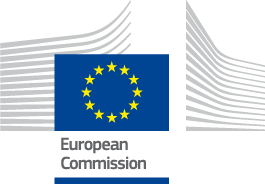It has never been more urgent to use cohesion funds to attract and retain citizens and protect existing communities in small and medium-sized cities, local representatives from five European cities discussed in Brussels.
The talk formed part of the 2023 European Week of Regions and Cities and touched upon the topics of infrastructure, biodiversity, leadership and cooperation, and strategy and vision.
The panel heard how the cities from different corners of the bloc made use of the cohesion funds in a way that it transforms them into more economic, urban centres.
Emil Boc, mayor of Cluj-Napoca in Romania said cities need to find their competitive advantage which can form the backbone of the city’s strategy.
“Our city does have a competitive advantage of being a university city with ten public universities and public and private universities with more than 100,000 students.”
Utilising this opportunity, the town managed to move from an industrial economy towards a technology-based economy, Mr Boc added.
He said that cooperation is key across all parts of society to successfully become a prosperous urban centre.
“Without collaboration, you cannot have success, and here I was talking about eco-system approach against ‘ego-system’ approach.
“We, the leaders, local, regional, national, European level, we should be the facilitator as a part of the communicator, not to be the boss or to have all the truths in the world.
“First, attitude towards collaboration, because the power of togetherness is the most important power in the world in Europe,” he said.
With brain drain and keeping talent in their original regions being key themes of this year’s #EURegionsWeek, other panellists shared their experiences too on students living and interacting in their cities.
The Finnish town of Turku also has a substantial student population of 40,000 young people which was a special factor that had to be considered when making plans for the changes.
Miia Paananen, representative of the Turku-Southwest Finland European Office said that in Turku there had already been a great discussion with the youth council.
“I think in these kind of participatory ways the voice of the young generation, students, it comes very strongly to the city decision making.
“The student associations are really active as well, giving input to the city planning.”
Among other projects, the Turku climate plan has been influenced by the opinions of the students, Ms Paananen added.
As the town is aiming to be a leading nature city – with the climate plan already in place –, it is also developing a biodiversity plan.
“The city is growing even though it’s a mid-sized city and now we have to answer the challenge of strengthening the vitality of the city, and at the same time answer this global challenge of protecting biodiversity,” she said.
A full-scale biodiversity park and two small ones will be created in three different neighbourhoods of the city for conversational aims.
At the same time local seed accumulation, planting different types of forests and actively managing the parks of the town will help with increasing the biodiversity.
Panellists agreed that collaboration and multi-governance is essential, and that disparities between the regions of the EU are still existing – and therefore a big need remains for cohesion funds.
By Gergő Pap
Edited by Johanna Sahlberg



